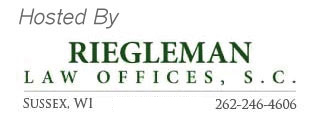During recent meetings, the Chiropractic Examining Board has been evaluating more significant changes to the Administrative Law Code controlling chiropractic in this state. This is part of an ongoing effort by various regulatory boards to comply with the Governor’s request that existing administrative laws be reviewed and updated. The Board has already made relativity uncontroversial updates to Chapters 1, 3, and 11, but is beginning to evaluate more pronounced changes to chapters 4 (“Practice”), 10 (Delegation), and eventually 5 (Continuing Education) and 12 (Nutritional Counseling). The Board’s actions with these chapters of the Code will have a more significant impact upon the chiropractor’s standard of practice and should be carefully monitored by all interested doctors.
With regard to Chapter 4, the Board considered changes which dramatically simplify the text, but leave open for future interpretation those techniques, procedures, and instruments which can be used in the course of a doctor’s practice. Initially, the Board approved a scope statement to insert into the code the definitions of “chiropractic science” and “practice of chiropractic” based upon existing language from the statutes (Chapter 446). Significantly, this statutory language replaces administrative code language from 1985 and excludes reference to “spinal subluxations”, “nerve energy expression”, and “biomechanical or physiological homeostasis”. Under the statutory definition, the profession is involved in “identifying the cause of departure from health”, then the “management and rehabilitation” to restore and preserve health, which is all done “without use of drugs or surgery”. By establishing this “bland” definition of chiropractic, the Board failed to incorporate “proprietary” type language which would have either distinguished the profession from other forms of physical medicine or confirmed the ability of D.C.’s to expand into practice areas commonly engaged in by the other health professions. Also concerning is the Board’s casual approach to other parts of this chapter dealing with “prohibited practice” techniques and instruments. The Board deleted large portions of the Code and opted to broadly prohibit any “practice system, analysis, method and protocol” which does have “scientific validity” or “include competent assessment, evaluation or diagnosis…” By retaining such a broad and vague language for practice standards, the Board is essentially leaving the interpretation and enforcement of proper practice standards to future Board members and yet unknown “advances” in science.
Chapter 10 has been altered to primarily clarify the role, training, and overall delegation by a doctor of “adjunctive services” and “physiotherapy treatment” to C.T’s and C.R.T’s. In the course of making these revisions, the Board continues to place the responsibility for oversight of these individuals within the office and verification of their proper training/credentialing directly upon the chiropractor. Additionally, with the exception of massage therapists, the new Code language does little to clarify the role of “other health care professionals” (such as M.D.’s, P.T,’s, etc. as listed in Wis. s. 446.01(1v) in providing any forms of adjunctive or supportive care for the patient receiving “primary” treatment from the chiropractor. This regulatory inaction maintains issues of uncertainty with regard to these other health professionals; particularly after consideration of chiropractic offices which are designed in the nature of “multi-disciplinary practices”.
Finally with regard to chapters 5 and 12, the Board is just beginning to explore changes, but faces a number of significant considerations that may factor into possible revisions. Those considerations include: (1) Deciding whether to allow doctors to complete all or some of their CE courses “remotely” or over the internet. Allowing such education could have a profound financial impact on the state’s two, chiropractic organizations. (2) Addressing whether the types of substances which can be the subject of “nutritional counseling” should now include other items. For years, Doctors have debated whether there are other substances which can contribute to “optional health” other than just those currently listed in the Code. Allowing counseling on other substances may open up opportunities for service to patients who presently do not obtain any form of treatment from chiropractors. (3) Clarifying the acceptability of “multi level marketing’ of nutritional supplements by doctors. This is also an issue from the past which the Board finally has an opportunity to clearly permit. (4) Determining the scope of a doctor’s “examination” in relation to providing the nutritional counseling. Many prospective consumers at the doctor’s office may only desire counseling to purchase supplements without the need for a complete chiropractic examinations as “new patients” of the office.
With all these considerations and others to be explored, the Board has an ongoing opportunity to revise the Code in a manner which “opens up” the viability of this profession to the public rather than restricts productivity through excessive and meaningless practice requirements. Those interested in the profession’s future would be wise to ensure that any Board revisions strive to meet that objective.

 COMMUNITY.
COMMUNITY.